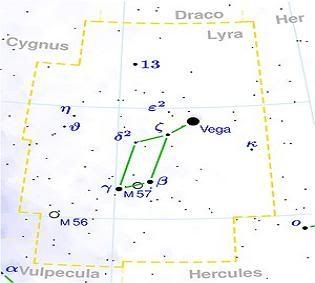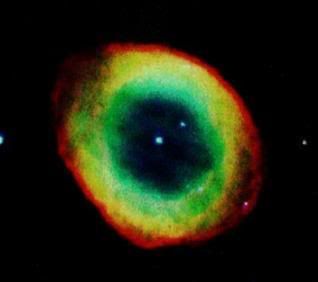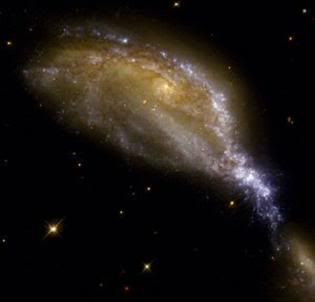Post by glactus on Feb 17, 2008 7:27:50 GMT

Lyra took its name from the stringed musical instrument well known for its use in Classical Antiquity and still in use in some areas of Greese. It is a small constellation, but its principal star, Vega, is one of the brightest in the sky. According to ancient Greek mythology, the young god Hermes created the lyre from the body of a large tortoise shell (khelus) which he covered with animal hide and antelope horns. Lyres were associated with Apollonian virtues of moderation and equilibrium, contrasting the Dionysian pipes which represented ecstasy and celebration.
Notable stars:
Alpha: Vega (a Lyr)
Vega forms a vertex of the Summer Triangle asterism. With an apparent brightness of magnitude 0.03, this is the second brightest star of the northern hemisphere (after Arcturus) and the fifth brightest star in all; its spectral class is A0 V and it lies at a distance of only 25.3 ly. It was the first star to be photographed.
Beta
b Lyr (Sheliak): a group of eclipsing binaries is named after this variable star (magnitude 3.45), spectral class B8 II), the Beta-Lyrae-stars. Distance from earth is 881 light years
Gamma
y Lyr (Sulafat): the main star of this multiple star system is of magnitude 3.24 and spectral class B9 III. Distance from Earth is 634 light years.
Delta
ä Lyr: a double star consisting of a blue-white star of magnitude 6.0 and a semi-regular red giant varying between magnitude 4.0 and 5.0. distance from Earth is 349 light years.
Notable objects:

Messier M 56
M56 is located about half-way between Beta Cygni (Albireo) and Gamma Lyrae. It is one of the less bright Messier globulars, especially lacking the bright core which most globulars have. Nevertheless it is not too difficult to resolve, even at its rather large distance. This led to its classification in concentration class X. Its distance from Earth is 32,900 light-years, and magnitude is 8.3.

Messier M57: Ring nebula
A cloudy patch in Lyra is the 57th nebula listed in Messier's catalog. M57, now known as the Ring Nebula, appears like a little smoke ring peacefully wafting through the starry night. However, this doughnut of glowing hydrogen gas, speaks of the violent explosion of the outer layers of a once massive star. Near the center of the ring, only its hot bluish core remains intact. M57 is 8,000 light years away and magnitude is 8.8.

NGC 6745
NGC 6745 is an irregular galaxy about 206 million light-years from Earth.. It is actually a triplet of galaxies in the process of colliding. The three galaxies have been colliding for hundreds of millions of years. After passing through the larger galaxy (NGC 6745A), the smaller one (NCG 6745B) is now moving away. The larger galaxy was probably a spiral galaxy before the collision, but was damaged and now appears peculiar. Magnitusde is 15.7.

Art planets
credits:
Lyra map: Wikipedia
en.wikipedia.org/wiki/Lyra
image: M 56:Gif images
www.astr.ua.edu/gifimages/m56v.html
image: M 57: Ring nebula
messier.obspm.fr/m/m057.html
image: NGC 6745: Wikipedia
en.wikipedia.org/wiki/NGC_6745


